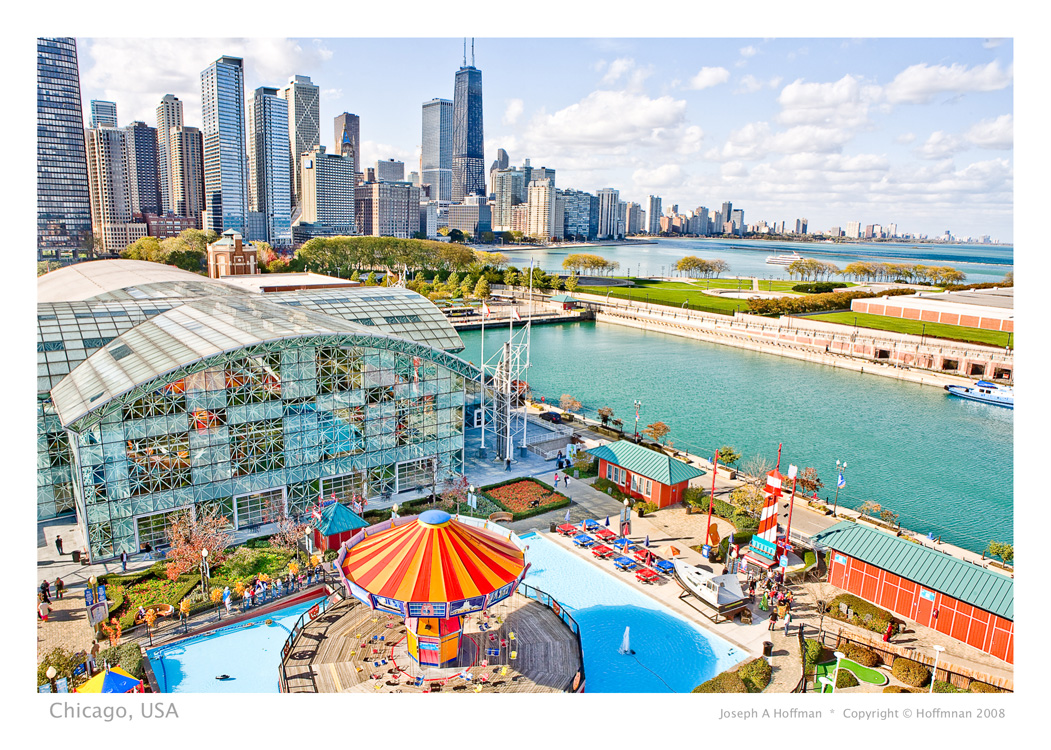- Home
- Lightroom Classic
- Discussions
- Re: Please bring back the Fill Light slider!!!
- Re: Please bring back the Fill Light slider!!!

Copy link to clipboard
Copied
I was extremely disappointed when I fired up LR4 last night. This new Shadows slider pales horribly in comparison to Fill Light. Frankly, it's a wimp!!! For me, Fill Light was magic. I can't tell you how many people would ask "how did you do that" when they looked at my pictures hanging on the wall. It was a perfect tool and one that made LR stand out. Not only did it fulfill its intended purpose of adding just that suble amount of fill, it also was an extremely efficient way to produce an edgy, psuedo HDR, effect. Hopefully Curves will allow close to the same results, but there's no way it will be as easy and reproducable. I kick myself for not having tried the bata version before paying the $69 upgade (thankfully it wasn't $150). If I can't figure this out, I'm heading back to LR3. Do others miss Fill Light like I do?
 1 Correct answer
1 Correct answer
Just as a followup to my origianl posting: I sat down with LR4 and specifically challenged PV2012 to allow me to recreate the effect in the Chicogo pic I posted above. I'm happy to say I got close enough for my satifiaction. I did it by maxing out shadows, cranking up exposure, slightly increasing blacks, dialing up clarity and finally uping vibrance. Incidently, I noticed that with PV2012, increasing clarity steals color saturation at a much higher rate, so it's necesary to give it back using
...Copy link to clipboard
Copied
My experience so far with LR4 is that I don't miss the Fill Light slider one bit, the Shadows slider does what I expect it to do, and I can achieve better image quality using the new LR4 sliders than I could using the LR3 sliders.

Copy link to clipboard
Copied
I don't miss it at all. You just have to learn how to deal with the new basic controls in PV 2012. In PV 2012 you should use exposure and contrast to get the bulk of the image right. That could mean that you have to apply more exposure than you were used to in PV 2010. If whites are too bright then, tune them downs using the highlights control. Then you can twaek the shadows by pushing up the shadows slider.
The PV 2012 is much better than its predecessor, because it can recover highlights much better (as long as any channel still has information) and it produces far less artefacts, such has halos and double contours.
Copy link to clipboard
Copied
Yep, you can't reproduce the effect as easily, but local adjustments can get you there. See this thread:

Copy link to clipboard
Copied
Ok, I'll have to play around with it a little more. But what I'm hearing is it will take more steps. Even then, I wonder if I'll be able to produce that edgy effect that i so liked with the Fill Light slider.
Copy link to clipboard
Copied
You can always use the 2010 Process Version if you want the halos.
Hal
Copy link to clipboard
Copied
I miss Fill Light too, but not because of what it can do (the new tools are ultimately better), but because of how fast it could do what takes many of the new tools to do. So I created some presets that I use as a good place to start. They are below.
I don't claim that these will match PV2010 fill light. What I claim is, these applied after import will provide a fill light - like effect similar in strength to fill light of the same name. I used to start many of my images with fill light, and these are a way to get to similar starting points faster.
Fill Light 20
Exposure 0.27
Contrast -15
Highlights -10
Shadows +10
Clarity 5
Saturation 5
Fill Light 40
Exposure 0.55
Contrast -30
Highlights -20
Shadows +20
Clarity 10
Saturation 10
Fill Light 60
Exposure 0.83
Contrast -50
Highlights -50
Shadows +50
Clarity 20
Saturation 25
Fill Light 80
Exposure 1.1
Contrast -60
Highlights -50
Shadows +50
Clarity 20
Saturation 25
Copy link to clipboard
Copied
Lee Jay wrote:
I miss Fill Light too, but not because of what it can do (the new tools are ultimately better), but because of how fast it could do what takes many of the new tools to do ...
This is my biggest problem with PV2012.
In my theatrical work, lighting changes dramatically from one shot to the next; hundreds of images must be processed individually. Fill Light was a fast correction which worked consistently from one image to the next. PV2012 requires a set of corrections, the effect of which change from one image to the next -- making for a much slower workflow.
Copy link to clipboard
Copied
You might make finer-spaced presets than I did.
Copy link to clipboard
Copied
Lee Jay wrote:
You might make finer-spaced presets than I did.
Thanks for the suggested workaround -- but it's still a workaround. Trial-and-error using a long list of presets will still be a lot slower than using a single Fill Light slider.
I'm also concerned that the image-adaptive nature of PV2012 adjustments may make presets (and even Paste Settings from Previous) less useful than in PV2010 -- but practice and experience will tell.
Copy link to clipboard
Copied
Tony.S wrote:
Lee Jay wrote:
You might make finer-spaced presets than I did.
Thanks for the suggested workaround -- but it's still a workaround. Trial-and-error using a long list of presets will still be a lot slower than using a single Fill Light slider.
There's a way around this that may in fact be superior to Fill Light. Scrolling your mouse over a preset while in Develop while the Navigator opens shows a very fast preview of the result of the preset. So slider over and just click when you find the one you want.
Copy link to clipboard
Copied
Lee Jay wrote:
There's a way around this that may in fact be superior to Fill Light. Scrolling your mouse over a preset while in Develop while the Navigator opens shows a very fast preview of the result of the preset. So slider over and just click when you find the one you want.
That's a great idea -- I'll give it a try.
Copy link to clipboard
Copied
Tony.S wrote:
This is my biggest problem with PV2012.
In my theatrical work, lighting changes dramatically from one shot to the next; hundreds of images must be processed individually. Fill Light was a fast correction which worked consistently from one image to the next. PV2012 requires a set of corrections, the effect of which change from one image to the next -- making for a much slower workflow.
One of the reasons LR3 Fill Light works so well is that it adds halo artifacts, which in most cases is not desirable:
http://forums.adobe.com/message/4241042#4241042
For your theatrical work I assume you are dealing with very high dynamic range images (i.e. very dark shadow areas) where the Fill Light halos are helpful. I felt the same way as you on initially using LR 4 Beta, that processing was going to take me at least twice as long to get the same image quality as in LR3. I do interior photography with natural lighting and perhaps a single flash used for "fill" lighting. LR3 Fill Light tool works amazingly well on these high dynamic range images, but I always felt the highlight areas were lacking in detail. After working on some of these images in LR4 final release I'm finding it only takes me slightly longer, and the results are nothing short of remarkable. Without even touching the Tone Controls I'm achieving results that look similar to HDR images, with both highlight and shadow detail that was not achievable in LR3.
Rob Cole has a post on the LR4 Beta forum with some good LR develop tool tips that helped me to speed up my processing:

Copy link to clipboard
Copied
One of the things I was fond of using the Fill Light adjustment for was to create surreal images like this shot below... I realize the HDR tools in PS can get me there as well, but this was extremely simple, and did not require multiple images. This is what I will miss...

Copy link to clipboard
Copied
Why should you miss this?
Play around with the basic sliders, in all extremes... I find it more easy to get *surreal images* than not ![]()
Copy link to clipboard
Copied
Cornelia-I wrote:
Why should you miss this?
Play around with the basic sliders, in all extremes... I find it more easy to get *surreal images* than not
Yes - +exposure, -highights and +shadows will certainly do that if pushed hard enough.

Copy link to clipboard
Copied
I'll give it a whirl... Thanks for all the input!
Copy link to clipboard
Copied
Joe: You could always use the 2010 process for your surreal images and then you will have the process 2010 sliders to hand, including the fill light slider. For other images the process 2012 will be available.
Anthony.
Copy link to clipboard
Copied
Lee Jay wrote:
I miss Fill Light too, but not because of what it can do (the new tools are ultimately better), but because of how fast it could do what takes many of the new tools to do. So I created some presets that I use as a good place to start. They are below.
I don't claim that these will match PV2010 fill light. What I claim is, these applied after import will provide a fill light - like effect similar in strength to fill light of the same name. I used to start many of my images with fill light, and these are a way to get to similar starting points faster.
Fill Light 20
Exposure 0.27
Contrast -15
Highlights -10
Shadows +10
Clarity 5
Saturation 5
Fill Light 40
Exposure 0.55
Contrast -30
Highlights -20
Shadows +20
Clarity 10
Saturation 10
Fill Light 60
Exposure 0.83
Contrast -50
Highlights -50
Shadows +50
Clarity 20
Saturation 25
Fill Light 80
Exposure 1.1
Contrast -60
Highlights -50
Shadows +50
Clarity 20
Saturation 25
+1 Lee Jay and as you said a good starting point. I think the bigger issue here and in some of the other improvements is that at some point we need to lock down the basic workflow from version to version in LR. There is the flags discussion, this, the difference in handling PV2012 altogether, etc. At some point we need to not have to go through large learning curves with each turn of the crank.. at least not for the basic functions. Adobe will have to eventfully fit the new functions into the existing controls as best they can. As one of the posters mentioned, something that was somewhat second nature to his job, is totally different now. Thanks again for the tip..
Jay S.
Copy link to clipboard
Copied
No doubt, fill in Lr4 is closer to:
+shadows +exposure -highlights
than +shadows alone.
And finessing the other sliders can also influence just how those shadows are filled where...
But, having to toss in
-contrast
+saturation
+clarity
points to a definite weakness in Lr4 shadow handling:
* You can't always get as good fill without sacrificing midtone contrast, and sometimes, you can. Lr3 fill pretty much did the same thing all the time, PV2012 does not: results can be very image dependent.
PS - Pleasing results of Lr3 fill have NOTHING to do with the masking halo artifacts - do not be fooled.
Rob
Copy link to clipboard
Copied
Rob Cole wrote:
No doubt, fill in Lr4 is closer to:
+shadows +exposure -highlights
than +shadows alone.
And finessing the other sliders can also influence just how those shadows are filled where...
But, having to toss in
-contrast
+saturation
+clarity
points to a definite weakness in Lr4 shadow handling:
* You can't always get as good fill without sacrificing midtone contrast, and sometimes, you can. Lr3 fill pretty much did the same thing all the time, PV2012 does not: results can be very image dependent.
PS - Pleasing results of Lr3 fill have NOTHING to do with the masking halo artifacts - do not be fooled.
Rob
Rob,
Fair point, and I usually set sharpness, noise and clarity first. I'm tending to adjust using the histogram more and more (did in LR 3 as well) to get myself close to where I want to be.. from there, using the sliders to fine tune hasn't been as huge a difference between 3 and 4 coming at it that way... At least for me.
Jay S.
Copy link to clipboard
Copied
JayS In CT wrote:
...using the sliders to fine tune hasn't been as huge a difference between 3 and 4 coming at it that way...
Easier and less tricky that way, but you will not be using Lr4 to it's fullest potential that way.
To get the most from PV2012, you must use the basic sliders first to do the heavy lifting, and tone curve to fine tune. Locals if you have time and/or need to...
The reason, in general, is that the sliders have sophisticated programming for recombining tones in a manner that preserves tones in one zone when adjusting the adjacent zones, so to speak. Tone curve can only increase contrast in one zone by decreasing it in another.
Rob
Copy link to clipboard
Copied
Rob Cole wrote:
JayS In CT wrote:
...using the sliders to fine tune hasn't been as huge a difference between 3 and 4 coming at it that way...
Easier and less tricky that way, but you will not be using Lr4 to it's fullest potential that way.
To get the most from PV2012, you must use the basic sliders first to do the heavy lifting, and tone curve to fine tune. Locals if you have time and/or need to...
The reason, in general, is that the sliders have sophisticated programming for recombining tones in a manner that preserves tones in one zone when adjusting the adjacent zones, so to speak. Tone curve can only increase contrast in one zone by decreasing it in another.
Rob
Rob,
I'll have to play with it that way and see if I notice a difference in getting to a better end result. I guess I was looking at it as making the adjustments visually by using the histogram display was directly moving those sliders.. kind of my way of doing the heavy lifting first.. I'll try it the other way around though. Thanks.
Jay S.
Copy link to clipboard
Copied
Sorry Jay - I misunderstood. Using the zone handles in the histogram is equivalent to using the sliders. I thought you were using the tone curve first, then sliders 2nd. My bad.
Copy link to clipboard
Copied
Rob Cole wrote:
Sorry Jay - I misunderstood. Using the zone handles in the histogram is equivalent to using the sliders. I thought you were using the tone curve first, then sliders 2nd. My bad.
No problem... sorry if I wasn't clearer.
Find more inspiration, events, and resources on the new Adobe Community
Explore Now